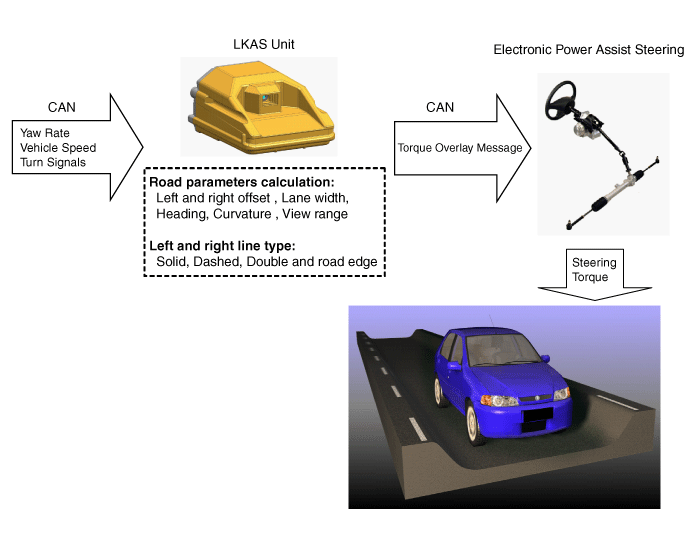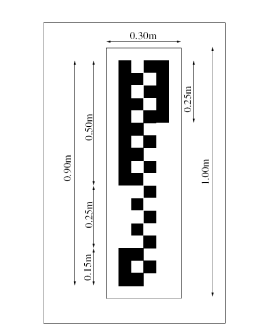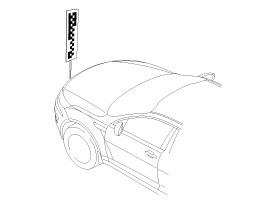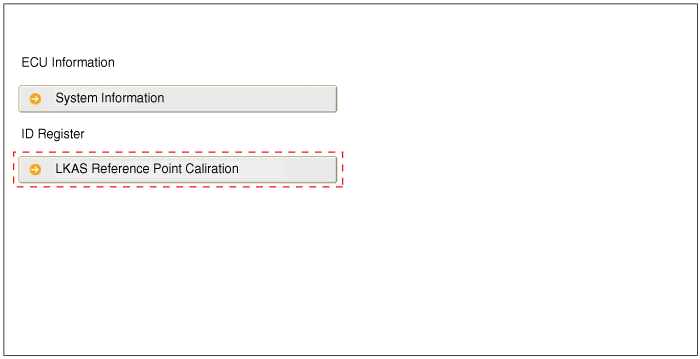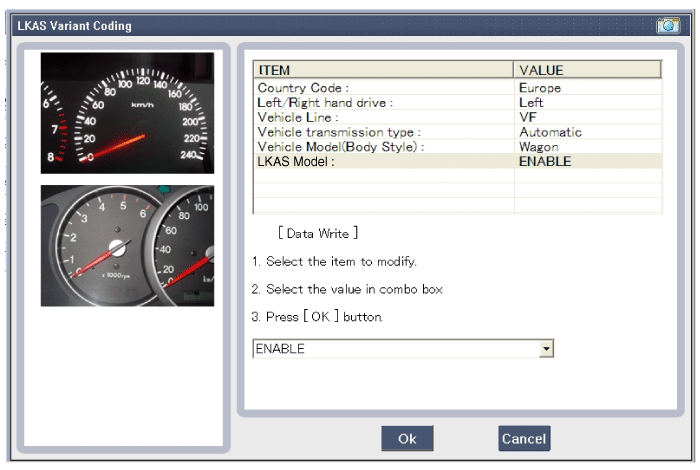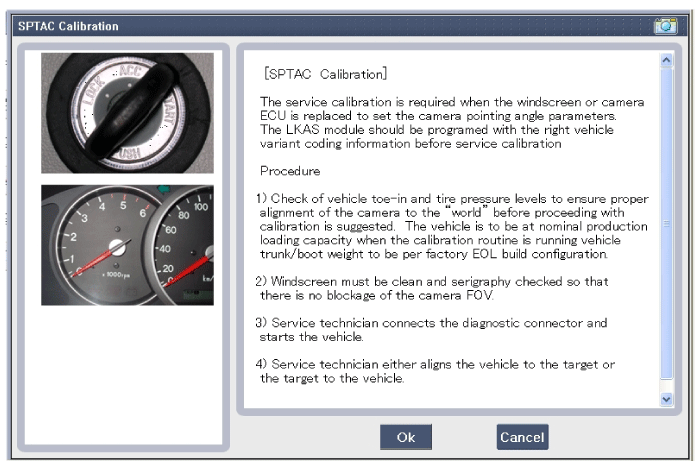Warning Method
Cluster Display Symbols
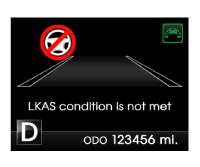 | 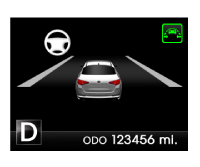 | 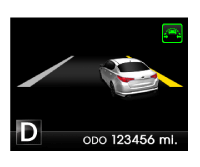 |
Lane not detected | Lane detected and LKAS system engaged | Right side deviation |
 | 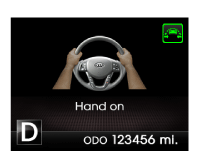 |  |
Left side deviation | Hold on the steering wheel | LKAS cancelled |
※ Display symbol and period vary according to vehicle's LCD and alarm.
(It is possible to adjust blinking period.)
LKAS is capable of recognizing continuing lines as lanes and has limited lane recognition capabilities when it comes to sharp-bending roads.
In addition, the system may not function properly under the following circumstances:
No or faded lane markings (failed lane detection).
Low visibility due to foul weather conditions.
Low light or sudden change in exterior light conditions.
Sharp bends of the road (curvature radius of less than 250m).
Sidewalks and other dividing structures along the edge of the lane.
Dirty windshield (low camera visibility).
